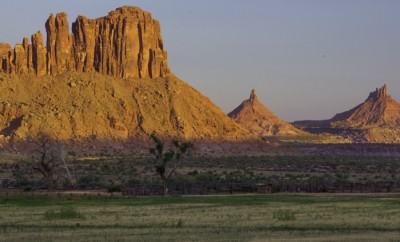Environment
Growing marijuana isn’t that green

Image: Shutterstock/Eric Limon
Contrary to the stereotype of marijuana growers as environmentally-conscious hippies, the cultivation of this plant, especially in an illegal context, has proven disastrous for the environment. According to Mary Power, ecologist and professor at the University of California, Berkeley, the public debate about marijuana in the U.S. has tended to focus on other aspects around marijuana such as criminal activity and health effects, at the exclusion of the environment. She argues for the importance of considering the environmental effects of marijuana cultivation on the environment, which include siphoning off scarce water resources, poisoning wildlife, eroding fragile soils, and overload waters with nutrients.
Pot grown illegally means pot grown without regulation. Without a regulative infrastructure to control the production, distribution and sale of weed, illegal growers “frequently damage soils, cut timber and clear vegetation to create room for their grows, creating resource damage and erosion problems,” according to the U.S. Forest Service. In addition, strong pesticides and even rat poison are often used in states where it is illegal. These chemicals are then drained into the ecosystem, damage and sometimes killing plants and wildlife. Although the legalization of this plant in states such as Alaska, Colorado, Oregon and Washington implies that its cultivation is regulated and thus the negative effects on the environment curbed, marijuana remains illegal in most states in the country, making it a threat to the environment.
However, whether marijuana is legal or not, its cultivation raises other problems from an ecological perspective. Growing marijuana requires a significant amount of water, up to six gallons per plant per day. That’s twice as much as wine grapes. In dry states like California, where water is a precious resource, growing marijuana means using up scarce reserves of water, sometimes even depleting watersheds and rivers. Some large-scale marijuana producers pump water directly from surrounding rivers and springs, reducing them to puddles. More careful regulation is needed to fight against this kind of water depletion.
Another major environmental issue with marijuana is energy consumption when cultivated indoors, because this plant requires a lot of light and air circulation. According to Evan Mills, staff scientist at Lawrence Berkeley National Laboratory and consultant at Energy Associates, the lights needed for growing marijuana are similar in brightness and in energy consumption to those found in a hospital operating room, and the air is changed sixty times as often as in an ordinary home. Some studies show that a typical marijuana grow house uses 200 watts per square foot—about the same amount of energy it takes to power a modern data center. Evans affirms that energy costs sometimes account for up to a quarter of the total cost consumers pay for usable marijuana.
Since the federal government does not consider marijuana a legal crop, it cannot receive the U.S. Department of Agriculture’s organic label, which would enforce regulations about the chemicals used for its production, its effects on the local ecosystem, and about energy consumption. Legalizing weed would allow for greater regulation and thus decrease the damaging effects on the environment.





0 comments